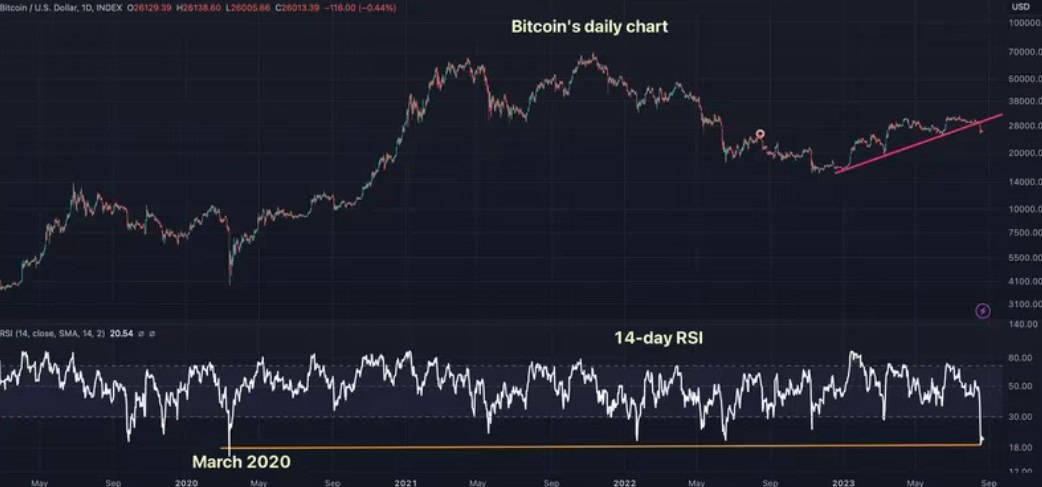A technical analysis indicator shows extreme oversold conditions in bitcoin as surging bond yields weigh over risk assets, including cryptocurrencies.
Bitcoin’s 14-day relative strength index (RSI) has dropped well below 30, indicating oversold conditions. The indicator has dropped to its lowest since the coronavirus-induced crash of March 2020.
The RSI is a momentum indicator ranging between 0 to 100 that shows the asset’s recent price movement relative to its average price movement over a specific period, usually 14 days.
A reading below 30 reflects oversold conditions, implying that the price has dropped too quickly relative to its recent average. Meanwhile, a reading above 70 indicates overbought conditions.
One of the mistakes that the crypto community on X (formerly Twitter) and most rookie traders make is to consider oversold and overbought readings as advance hints of an impending bullish and bearish reversal.
But that’s not the case. An oversold RSI reading means prices have dropped too quickly – that’s it, while overbought reading indicates prices have rallied fast.
If anything, the latest below-30 or oversold reading on the RSI is a sign of strengthening bearish momentum. As the old saying goes, indicators can stay oversold longer than dip buyers can stay solvent.
According to Alex Kuptsikevich, senior market analyst at the FxPro, bitcoin’s trend has shifted bearish.
“Bitcoin closed the [last] week with a notable drop below its 200-week and 200-day moving averages, signaling a shift to a bearish trend. From current levels near $26,000, the following area of decline appears to be the last pivot area at $24,700,” Kuptsikevich said in an email.
Bitcoin changed hands at $26,000 at press time. Prices fell over 10% last week as the yield on the 10-year U.S. inflation-indexed security nearly rose to 2%, hitting the highest since 2009.

